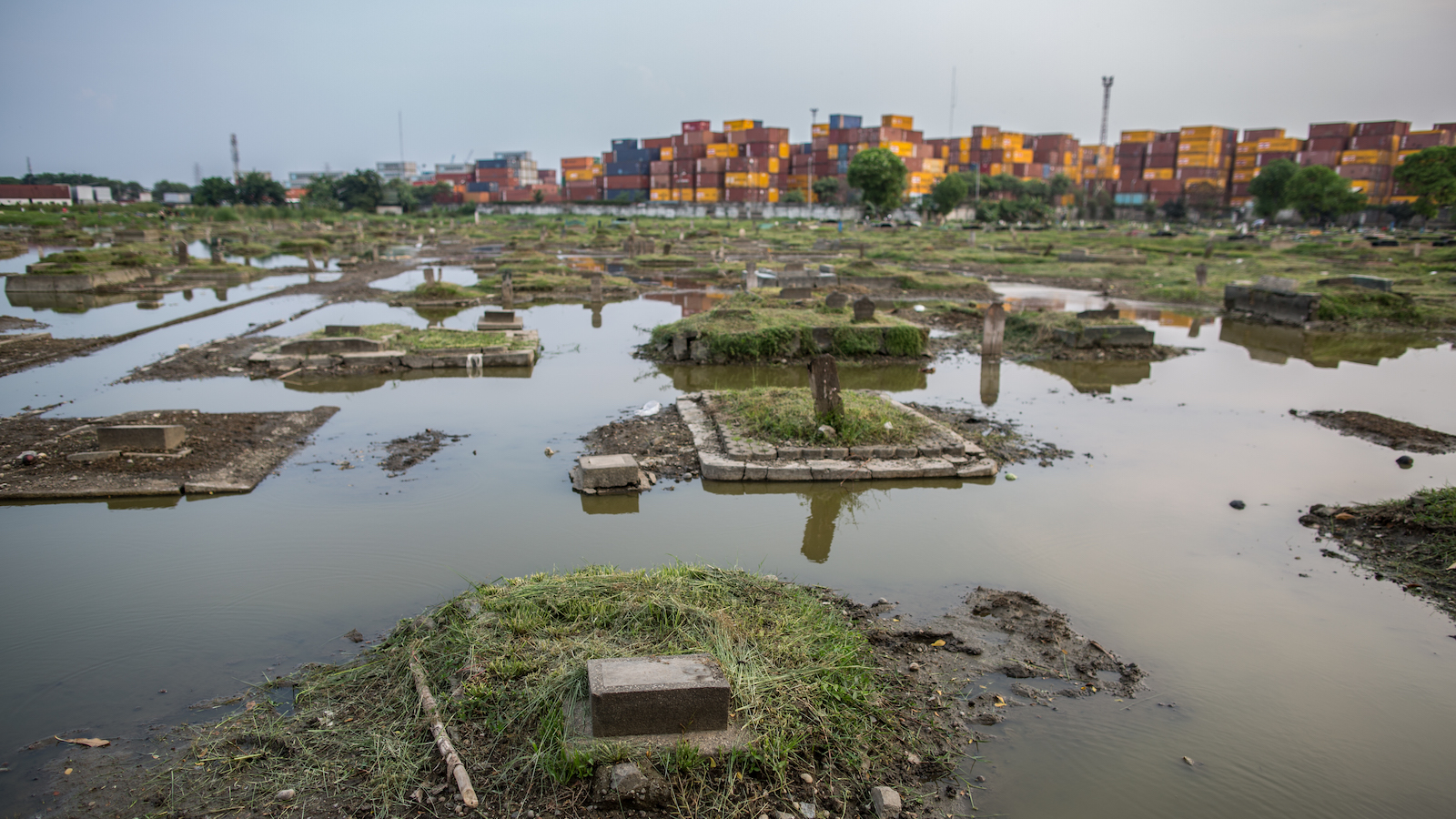This story was originally published by Hakai Magazine and is reproduced here as part of the Climate Desk collaboration.
In the next few years, Indonesia will start moving its capital city from one island, Java, to another, Kalimantan, the Indonesian part of Borneo. There are a few reasons for the move, but one of the biggest is that the country’s current capital, Jakarta, is sinking at an alarming rate. By the middle of this century, one-third of the city will be underwater.
It would be easy to mistake Jakarta’s pending demise as the work of sea level rise. Yet the city’s decline is actually being driven by another force — land subsidence spurred by groundwater extraction.
Projections of sea level rise have put a countdown on several coastal cities. But a new study shows that the combination of coastal subsidence and sea level rise acts like a welcome mat for water. Using satellite data, the researchers measured subsidence rates in 99 coastal cities around the world. They found that most are sinking faster than sea levels are rising. In many cities, such as Manila in the Philippines, Tampa in Florida, and Alexandria in Egypt, this means coastal flooding will become an issue much sooner than predicted by models of sea level rise alone.
The worst affected cities are all in Asia. These cities, including Chattogram in Bangladesh, Semarang in Indonesia, and Ho Chi Minh City in Vietnam, have areas with subsidence rates of more than 20 millimeters per year, which is 10 times higher than the global mean sea level rise of two millimeters per year. In one-third of the 99 cities studied, however, at least part of the city is sinking by 10 millimeters or more per year.
“A lot of cities are planning for sea level rise, but they are not aware of the compounding effect of coastal subsidence,” says Meng (Matt) Wei, an oceanographer at the University of Rhode Island and one of the study’s authors. For instance, he has not seen any reports of subsidence in Barcelona, Spain, but found that the airport, the port, and a residential area are all sinking faster than the sea is rising.
To see where subsidence is most likely to cause imminent coastal flooding, particularly from storm surges, the researchers focused in on rapidly sinking areas that are also low lying. They found four cities with more than 1,000 square kilometers of land below 10 meters elevation that is sinking quickly. These four subsidence hotspots — Shanghai and Tianjin in China, Hanoi in Vietnam, and Bangkok in Thailand — are all in Asia, but they also found a further 18 cities throughout the world with between 100 and 1,000 square kilometers of fast-subsiding, low-elevation area.
There is hope, though. Around 60 years ago, parts of California were sinking fast, but that subsidence was largely curtailed through changes in groundwater management. And even Jakarta’s subsidence has been cut significantly in the past 20 years, from 280 millimeters per year to 35, though it’s still not enough to save the city.
“In Tokyo, they have had enormous problems with subsidence, but they have basically changed their complete water extraction for the city and the subsidence stopped,” says Roderik van de Wal, an expert in sea level change at Utrecht University in the Netherlands who was not involved in the research. He says that while subsidence is an urgent issue, local measures can be effective — unlike with sea level rise, which requires global action on climate change.


